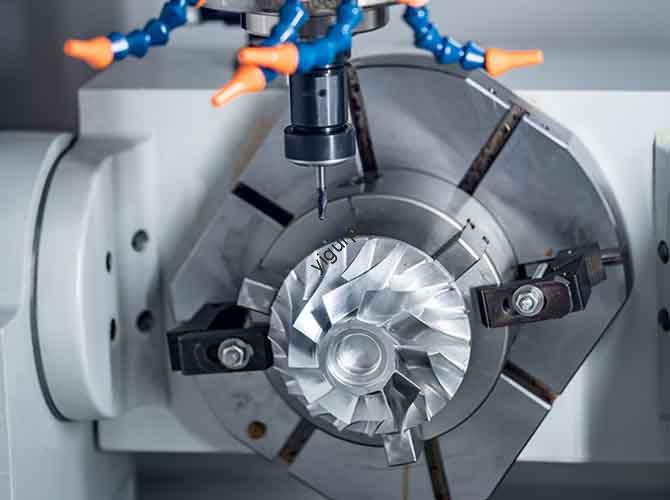In today’s fast-paced manufacturing world, how do factories produce complex parts with consistent accuracy and efficiency? The answer lies in automatic CNC machining—a technology that has revolutionized how we create components for industries from aerospace to medical devices. This guide breaks down everything you need to know about this game-changing process, from its basic structure to real-world applications.
1. What Is Automatic CNC Machining?
At its core, automatic CNC machining uses computer numerical control (CNC) systems to automate machine tool movements, eliminating the need for constant manual adjustment. Unlike traditional manual machining, which relies on human skill to guide tools, CNC machining follows preprogrammed instructions to deliver repeatable, high-quality results.
Key Components of an Automatic CNC Machining System
The system cannot function without four critical parts. The table below outlines their roles:
| Component | Primary Function |
| CNC Machine Tools | Execute physical machining tasks (e.g., cutting, drilling, milling) on raw materials. |
| CNC Control System | Interpret program code and send signals to control tool speed, position, and feed rate. |
| Programming Software | Create G-code (the language of CNC machines) using 3D models (e.g., CAD software outputs). |
| Skilled Operators | Monitor operations, troubleshoot errors, and adjust parameters for optimal performance. |
2. 3 Unbeatable Advantages of Automatic CNC Machining
Why do manufacturers worldwide choose automatic CNC machining over traditional methods? Here are three non-negotiable benefits:
- High Automation: Once programmed, CNC machines can run 24/7 with minimal human intervention. For example, a medical device factory can produce 500+ precision surgical screws in a single shift—something manual machining could never match.
- Exceptional Precision: CNC systems operate with tolerances as tight as ±0.001 inches (0.0254 mm). This level of accuracy is critical for aerospace parts, where even a tiny error could lead to catastrophic failures.
- Strong Flexibility: Need to switch from making a aluminum bracket to a stainless steel gear? Simply update the program—no need to retool the entire machine. This cuts setup time by 50% or more compared to traditional machining.
3. The Step-by-Step Automatic CNC Machining Process
Creating a part with automatic CNC machining follows a linear, repeatable workflow. Think of it like baking a cake: you need the right recipe (program) and steps to get a consistent result.
- Design Modeling: Use CAD software (e.g., SolidWorks, AutoCAD) to build a 3D digital model of the part. This model acts as the “blueprint” for machining.
- Data Conversion: Export the CAD model to a format CNC machines understand, such as STL (Standard Tessellation Language) or STEP. This step ensures the machine can “read” the design.
- Slicing & Programming: Use CAM (Computer-Aided Manufacturing) software to slice the 3D model into 2D layers (like slicing a loaf of bread). The software then generates G-code—specific instructions for the machine’s tools.
- Layer-by-Layer Machining: The CNC machine follows the G-code to remove material (e.g., via milling or turning) layer by layer, shaping the raw material into the desired part.
- Post-Processing: Finish the part with tasks like sanding (to smooth surfaces), deburring (to remove sharp edges), or painting (for corrosion resistance).
4. Automatic CNC Machining vs. Traditional Machining: A Clear Comparison
Is automatic CNC machining worth the investment? Let’s compare it to traditional manual machining using key metrics:
| Metric | Automatic CNC Machining | Traditional Manual Machining |
| Accuracy | Tolerances of ±0.001–±0.005 inches | Tolerances of ±0.01–±0.05 inches (depends on operator skill) |
| Production Speed | 2–5x faster for high-volume runs | Slow; limited by human reaction time |
| Labor Requirement | 1 operator can monitor 3–5 machines | 1 operator per machine |
| Cost for Complex Parts | Lower (no retooling for design changes) | Higher (requires custom tools for each part) |
5. Yigu Technology’s Perspective on Automatic CNC Machining
At Yigu Technology, we see automatic CNC machining as the backbone of modern manufacturing innovation. Over the past decade, we’ve helped 200+ clients—from automotive startups to medical device makers—adopt CNC solutions that cut production costs by 30% and improve part quality by 40%.
The biggest pain point we solve? Small-batch production inefficiencies. Many manufacturers worry CNC is only for large runs, but our tailored programs let clients produce 10–500 parts cost-effectively. As technology advances (e.g., AI-powered CNC systems), we’ll keep making this tool more accessible to drive industry growth.
FAQ: Your Top Automatic CNC Machining Questions Answered
Q1: What materials can be used in automatic CNC machining?
A1: Almost any rigid material works, including aluminum, steel, titanium, plastic (e.g., ABS), wood, and even some ceramics. The choice depends on the part’s use (e.g., titanium for high-strength aerospace parts).
Q2: How long does it take to program a CNC machine for a new part?
A2: For simple parts (e.g., a basic bracket), programming takes 1–2 hours. For complex parts (e.g., a medical implant with curved surfaces), it may take 4–8 hours—still faster than creating custom tools for traditional machining.
Q3: Is automatic CNC machining suitable for small businesses?
A3: Yes! Many CNC providers (like Yigu Technology) offer scalable solutions. Small businesses can start with a single machine and short-run programs, avoiding large upfront investments while still enjoying CNC’s accuracy and speed.
